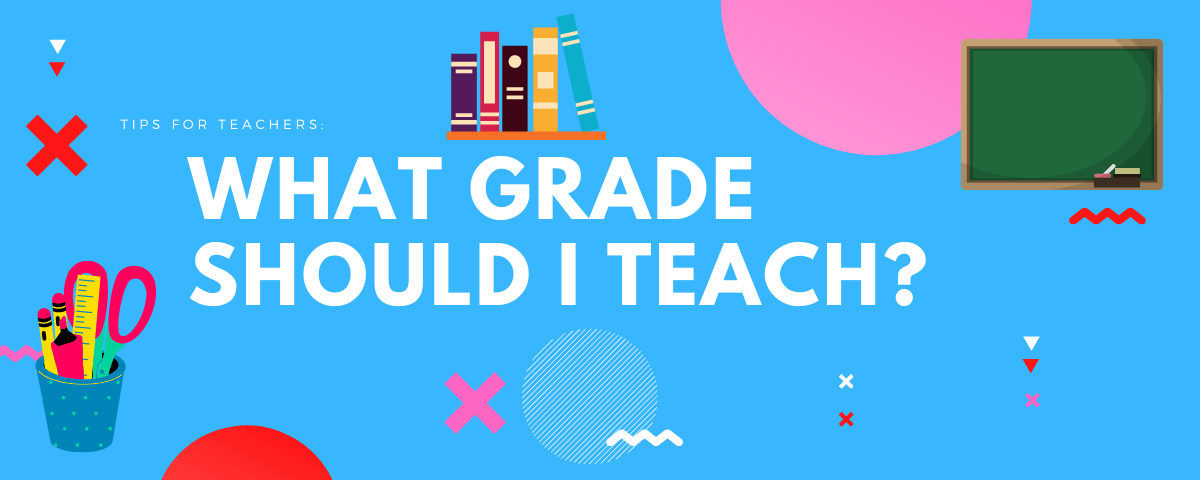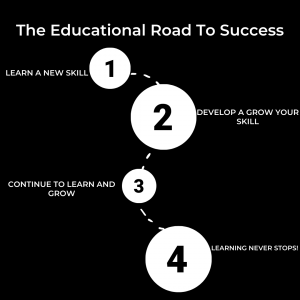Tips for Teachers: What Grade Should I Teach?
Becoming a teacher is a challenging and rewarding profession. It is also a profession that requires many skills and qualities. There are several things you should consider before becoming a teacher. Moreover, there are a lot of questions that go into deciding what grade you should teach.
For example, how many years of college does it take to become a teacher? What age group is most appropriate for me? What grade do they start teaching in elementary school? Let’s explore some of these questions and try to come up with a few answers.
The number of years it takes to become a teacher
There are a few different ways to become a teacher. The most common way is to get a Bachelor’s degree in teaching from a college or university. After completing your education, you will need to pass a certification exam to get your teaching license and teach in schools.
How many years of college to become a teacher?
It usually takes about four years to complete a teaching degree. For most people who want to teach, this is the best option for gaining experience and useful skills. You can also pursue a Master’s degree in education if you want to boost your employability further. Montessori teaching courses and other teaching master degrees are even available to take online, so you can learn and become more skilled as you work too.
Teachers must be able to connect with their students and make lessons fun and engaging. In addition, they need excellent communication skills to give feedback on assignments and behavior. These basic qualifications are necessary if you want a job in most schools.

How does grading work in schools?
The education system is divided into three levels/schools: elementary school, middle school, and high school.
Elementary School
When it comes to teaching elementary school, there are a few things you need to consider. One is the age of your students. Another is their grade level. Elementary school students can be divided into three categories: kindergarten, first grade, and second grade.
Kindergarten is for students who are five years old. They are just starting their education and are learning the basics.
The first grade is for students who are six years old. They are continuing their education and are learning more advanced topics.
The second grade is for students who are seven years old. They have already completed one year of elementary school and are now moving on to more difficult material. The third, fourth, and fifth grades are for children aged eight to twelve.
Middle School
Middle school typically caters to students around the age of twelve, who have completed six years of elementary school and are transitioning into a new phase of their education. In middle school, students are exposed to different subjects and coursework compared to their earlier years. They also take classes that prepare them for the challenges of high school, including additional math and science courses. As a teacher in middle school, you may find it necessary to closely monitor your students’ homework and assignments. One helpful tool for managing this is an Online Gradebook system. This system enables you to efficiently track your students’ progress and offer real-time feedback. In short, you may need to pay extra attention to middle school students compared to elementary schools.
High School
High school is where you find students around fifteen or sixteen years old. They’ve already been in school for seven years, and now, they’re in the last part of their childhood education journey. In high school, things get a bit more challenging. They dive into tougher subjects like world history and physics. To help them with these complex topics, many schools use tech stuff like Interactive Projectors and digital whiteboard for teaching. So, if you’re thinking about teaching high school, it might be handy to know your way around these tech tools.
What factors go into deciding what grade to teach?
When deciding which grade to teach, there are a few important factors to consider. One of the most important is your experience and qualifications. Another is the age range of your students. Additionally, your personality traits can determine where you might fit best. Finally, you also need to take into account what subjects you want to teach.
- Experience and qualifications: You need to be sure that you are capable of teaching the grade level you have chosen. You also need to be confident in your abilities so that you can effectively teach your students. You can check the state requirements for experience and qualifications in your area by doing some research online.
- Age range: Younger students may be more challenging to teach, but they are also more eager to learn. Older students can be more challenging to manage, but they are also more likely to be interested in the material you are teaching.
- Personality: Are you naturally calm? Do you have plenty of patience? If so, an elementary school role could be perfect for your temperament. Alternatively, if you have empathy for young people or if mentoring teens sounds more appealing to you, middle school or high school teaching might be a better fit for your personality traits.
- Curriculum: Elementary teachers are generalists and need a basic knowledge of all core subject areas. Middle school and high school teachers tend to specialize in a particular subject and share more advanced expertise with their students. Therefore it is important to decide if you want to teach a specific subject or a combination. You can take a look existing curriculums on blogs such as The Teaching Couple and others to see which subjects you feel up to the task of teaching. Basically, do your due research before deciding.

What are the benefits and drawbacks of teaching the different grades?
There are pros and cons to teaching children of all ages and abilities. Below, you can find an overview of the advantages and disadvantages educators typically face:
Elementary School
Elementary school students are eager to learn and have a fresh perspective on the world. Elementary school teachers are also generalists and need a basic knowledge of all core subject areas which can be a good fit for people who enjoy a varied workday.
However, it is no secret that elementary students can be challenging to teach. Managing a classroom of young students is difficult and requires patience, especially when dealing with young learners who are yet to grasp the rules and expectations of the classroom environment.
Middle School
Teaching middle school children involves helping students transition from childhood to adolescence. During this time, students start to develop their academic and personal identities and grow their social skills. Therefore, educators need to create a safe and supportive environment and an age-appropriate teaching program so students can explore these new freedoms.
On the other hand, teaching middle school students can be challenging because they are no longer eager learners as they were in elementary school, but are rather beginning to explore their independence. This can lead to classroom disruptions and defiance towards authority. Middle schools require teachers that are willing to go the extra mile to help children to grow into thoughtful and mature individuals and this is not always easy.
High School
One advantage of teaching high school students is that they are typically more motivated and engaged in their learning than younger students. They are also nearing the age where they will be making important decisions about their future, so there is an opportunity to help guide them in the right direction and prepare students for college and university.
A downside of teaching high school students is that they can be more challenging to manage than younger students. They are also at an age where they are starting to form their own opinions and so it can be tough to encourage high schoolers to work together on collaborative learning projects. Tracking student progress also plays a significant role during these formative years and this can place an administrative burden on the teaching staff.
Don’t be afraid to ask about how to switch grades
The decision of what grade to teach is a difficult one. You need to consider what level you think you can perform at your best, your preferred teaching methods, what grades are available in the school district that may be hiring, and what subject matter interests you most.
Some people decide on teaching based on their major in college. For example, if they majored in education or psychology it might make sense for them to teach an elementary classroom full of children who are still learning how to read and write.
However, there’s nothing wrong with changing directions later down the road once you get more experience under your belt. Some schools encourage teachers to switch grades regularly at the beginning or end of the school year until they find the grade they like best so do be sure to explore your options if you are unhappy or feel ready for a new challenge.


